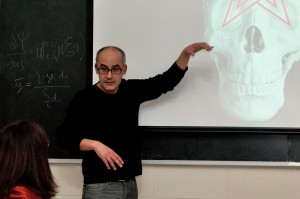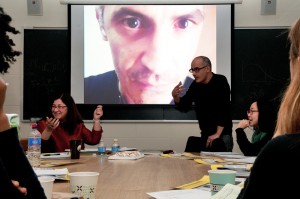Moroccan artist in residence, Mustapha Akrim, has extended his participation in the Haverford College community to working with some of the school’s art classes. In a workshop led by Akrim alongside Professors John Muse and Erin Schoneveld, Akrim showed various students from the Tri-Co how to construct art with concrete.
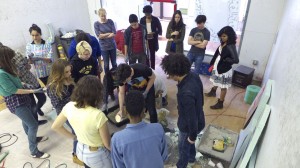
Students were assigned to choose any word, in any style, to that they would make a mold of and create out of concrete. In order to explain how students arrived at their respective word choices, Professor Muse recalled that the class discussed “words, concrete, and typography” together and how each principle could relate to each other. Like with Mustapha’s Article 13 and Article 25, the students considered how their words would be interpreted once molded into concrete. One group of students played with the use of concrete as a very permanent material and the impermanence of promises, especially those made over text message, by creating the word “Yes” surrounded by a speech bubble. Other students focused less on the metaphorical meaning of concrete, and focused more on the typographic style of the words.
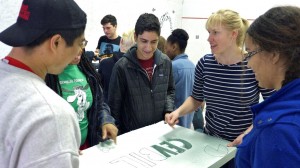
Akrim uses concrete in part for its accessibility and his familiarity with the material, and partly because of the permanence that it represents. Because many of Mustapha’s works relate to the dichotomy between what the government promises its people and what the people actually receive, concrete serves as a vehicle for showing this irony. This workshop allowed students to fully understand the effort that goes into Akrim’s work and how it is as much a complex creative experience as it is physically labor intensive process.
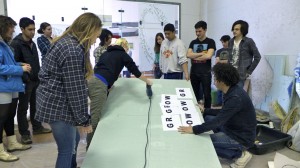
To start off the tutorial, Akrim directed the students to cut their words out of the polystyrene mold with a drill. After cutting squares surrounding each word out of the polystyrene, they placed the print out of their words on the polystyrene and poked holes through the page, outlining each letter.
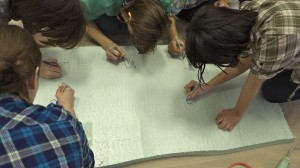
Students traced over the imprinted poke holes left in the polystyrene, then began to cut out their words; the negative space being left in order to be filled in with concrete.

Students left their molds in Mustapha Akrim’s studio for a few days, and are set to retrieve them tomorrow, Saturday March 29.





